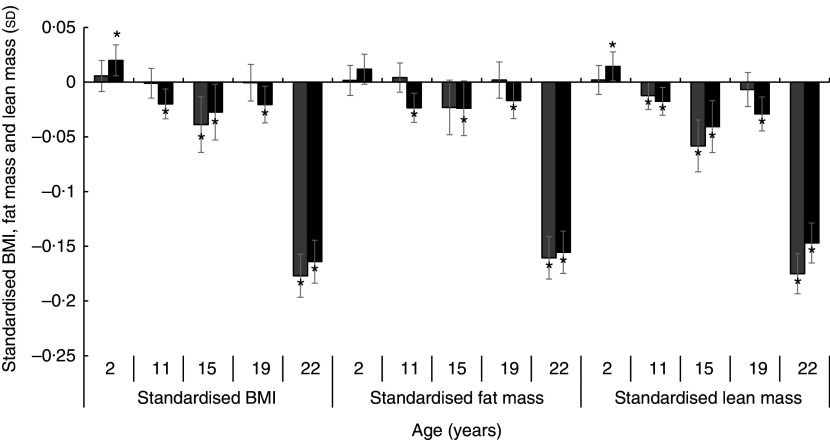Fig. 1.
Protein intakes relative to needs were differentially associated with fat mass, lean mass and BMI at age 22 years in an age-dependent manner in the Cebu Longitudinal Health and Nutrition Survey (CLHNS). Bars represent the change in early adulthood standardised BMI, fat mass or lean mass, associated with a 20 % increase in protein intake at the indicated age relative to the recommended daily allowance for that age. BMI, fat mass and lean mass at age 22 years were standardised to the mean of the sex-stratified sample of the CLHNS. Coefficients were derived from the linear regression of age-specific protein intakes relative to needs on the standardised outcomes and adjusted for characteristics at birth (offspring weight, maternal education and maternal height), characteristics at age 2 years (offspring BMI and household assets), characteristics from age 22 years (offspring education and assets, physical activity level, carbohydrate residuals, fat residuals and energy intake).  , Males;
, Males;  , females. *P<0·05.
, females. *P<0·05.

